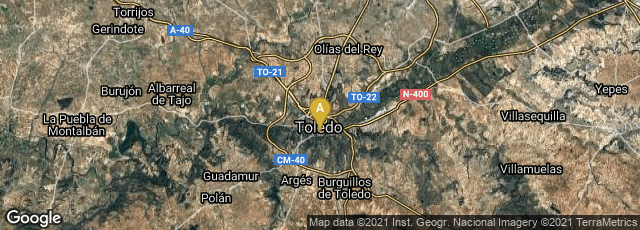

A: Toledo, Castilla-La Mancha, Spain
In 1565 Italo-Spanish clockmaker, engineer and mathematician of Toledo Juanelo Turriano (Gianello Torriano; born Giovanni Torriani) may have created an automaton of a monk, made of wood and iron, 15 inches in height. This automaton, which still operates, was acquired by the Smithsonian Institution in 1977. Regarding this automaton Elizabeth King wrote:
"Driven by a key-wound spring, the monk walks in a square, striking his chest with his right arm, raising and lowering a small wooden cross and rosary in his left hand, turning and nodding his head, rolling his eyes, and mouthing silent obsequies. From time to time, he brings the cross to his lips and kisses it. After over 400 years, he remains in good working order. Tradition attributes his manufacture to one Juanelo Turriano, mechanician to Emperor Charles V. The story is told that the emperor's son King Philip II, praying at the bedside of a dying son of his own, promised a miracle for a miracle, if his child be spared. And when the child did indeed recover, Philip kept his bargain by having Turriano construct a miniature penitent homunculus. Looking at this object in the museum today, one wonders: what did a person see and believe who witnessed it in motion in 1560? The uninterrupted repetitive gestures, to us the dead giveaway of a robot, correspond exactly in this case to the movements of disciplined prayer and trance" (https://blackbird.vcu.edu/v1n1/nonfiction/king_e/prayer_introduction.htm, accessed 9-2020).